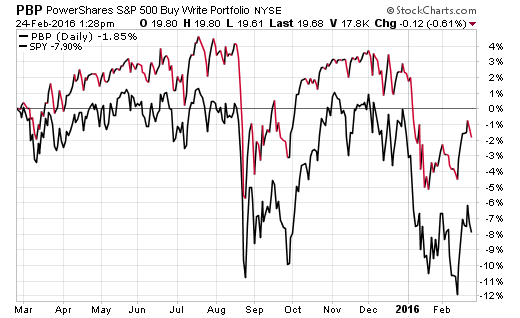Many investors have now transitioned to a lower stock allocation during the midst of this early 2016 decline. In fact, it has likely created a new sense of reality that it may be time to transition to a structure of low volatility to wait out the storm.
A conventional and highly touted method has been to own stocks with lower historical price fluctuations than their peers like the iShares MSCI USA Minimum Volatility ETF (USMV). However, there is also another way for ETF investors to own a basket of stocks with built-in options to collect income and potentially reduce price volatility.
Covered call ETFs are also often referred to as a “buy-write” options strategy. This process involves owning a group of publicly traded stocks and selling call options on the underlying securities to collect the premium. This can be done by sophisticated investors on individual positions or you can effectively own an ETF or two that will do it for you on a diversified basket of stocks.
The end goal is to collect income from the options contracts, which will ultimately reduce the effectiveness of these ETFs during a sustained uptrend in the market. Nevertheless, they have shown far less relative drawdown than their fully loaded index peers during the last two recent corrections.
The oldest and most established fund in this group is the PowerShares S&P 500 BuyWrite Portfolio (PBP). This ETF debuted in 2007 and has accumulated $312 million in assets. As you can see on the chart below, PBP has been able to sidestep a great deal of the decline versus the broad-market SPDR S&P 500 ETF (SPY). It was also able to accomplish that same feat in the summer 2015 swoon as well.

It’s worth noting that over longer periods of time, the PBP performance story falls short of the stock-only SPY. This is primarily due to the drag of the options buy-write strategy on 3, 5, and 10-year time horizons. In addition, PDP charges a premium expense ratio of 0.75% for the implementation of its unique approach.













Leave A Comment